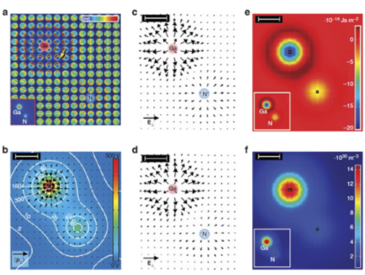Knut Müller, Florian F. Krause, Armand Béché, Marco Schowalter, Vincent Galioit, Stefan Löffler, Johan Verbeeck, Josef Zweck, Peter Schattschneider & Andreas Rosenauer
Nature Communications (2014) 5, 5653
By focusing electrons on probes with a diameter of 50 pm, aberration-corrected scanning transmission electron microscopy (STEM) is currently crossing the border to probing subatomic details. A major challenge is the measurement of atomic electric fields using differential phase contrast (DPC) microscopy, traditionally exploiting the concept of a field-induced shift of diffraction patterns. Here we present a simplified quantum theoretical interpretation of DPC. This enables us to calculate the momentum transferred to the STEM probe from diffracted intensities recorded on a pixel array instead of conventional segmented bright-field detectors. The methodical development yielding atomic electric field, charge and electron density is performed using simulations for binary GaN as an ideal model system. We then present a detailed experimental study of SrTiO3 yielding atomic electric fields, validated by comprehensive simulations. With this interpretation and upgraded instrumentation, STEM is capable of quantifying atomic electric fields and high-contrast imaging of light atoms.


